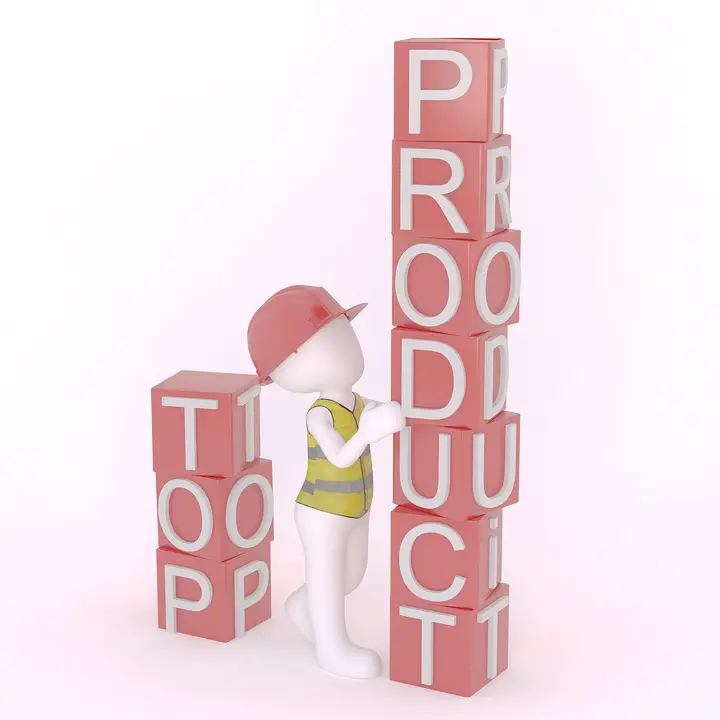Welcome to the wild world of the digital marketplace, where the only thing more unpredictable than your Uncle Larry at a family barbecue is the price of NFTs. Whether you’re looking to scoop up some digital goodies or cash in on the latest trends, navigating this chaotic landscape can feel like trying to find a Wi-Fi signal on a deserted island. But fear not! I’m here to arm you with the tips and tricks you need to thrive in this digital bazaar. So, grab your metaphorical surfboard because we’re about to ride the wave of buying and selling digital products!
Understanding the Digital Marketplace
Before we dive into the nitty-gritty, let’s clarify what we mean by the digital marketplace. This is an online platform where you can buy, sell, or trade various digital goods. Think everything from eBooks and online courses to graphics and software. In other words, if it can be downloaded or streamed, it’s fair game.
Why Go Digital?
- Low Overhead Costs: No need for a physical storefront or stockroom—just a good internet connection.
- Global Reach: Your customer base is essentially the entire world (hello, international shipping woes!).
- Scalability: Sell one product or a thousand without breaking a sweat.
- Variety: Endless options to create or purchase—if you can dream it, someone’s probably selling it.
Buying Digital Products: The Smart Shopper’s Guide
Let’s kick things off with the buying side of the equation. Whether you’re looking to upskill or just grab that cute digital planner you saw on Instagram, here are some killer tips to make sure you’re not throwing your money into the digital abyss.
1. Do Your Homework
Before you click "Buy Now," channel your inner Sherlock Holmes. Research the product and the seller. Look for reviews, testimonials, and any red flags that scream, “This is a scam!” If the product is a course, check if the creator has credible experience. If they’re teaching you how to make money online, but their LinkedIn only lists “Professional Cat Video Watcher,” you might want to reconsider.
2. Look for Deals and Discounts
Digital products often go on sale. Sign up for newsletters, follow creators on social media, and keep an eye on seasonal sales. You might snag that online course at a fraction of the price. Pro tip: Never pay full price for anything online unless it’s a life-or-death situation—like missing out on a limited-time cat meme collection.
3. Check Compatibility
Before you hand over your credit card info, make sure the product works with your devices. Is that fancy new graphic design software compatible with your ancient laptop from 2010? Spoiler alert: probably not. Always double-check system requirements to avoid buyer’s remorse.
4. Understand Licensing
Some digital products come with restrictive licenses. For example, a stock photo might only be usable for personal projects, while others can be used commercially. Make sure you read the fine print so you’re not in hot water later on.
5. Use Secure Payment Methods
When you’re ready to buy, use secure payment methods. Credit cards, PayPal, or other trusted payment gateways provide an extra layer of security. If someone asks you to wire money directly—run! Unless you’re trying to fund a Nigerian prince’s dream project (and let’s be real, you’re not).
Selling Digital Products: Your Road to Online Riches
Now that you’re armed with knowledge on buying, let’s flip the script and talk about selling digital products. If you’ve ever thought, “Hey, I have skills that could make me rich!” then this section is for you.
1. Identify Your Niche
First things first, find your niche. What skills do you have that people are willing to pay for? Are you a whiz at graphic design? A master of the written word? Or maybe you can create kickass online courses? Identify your strengths and target an audience that craves what you have to offer.
2. Create High-Quality Products
If you’re going to sell, make sure you’re selling something that doesn’t suck. Whether it’s an eBook, an online course, or digital art, quality is key. Invest time in making your products polished and professional. Remember, your digital products are a reflection of you. Would you want your name associated with a half-baked product that looks like it was created in 1999?
3. Choose the Right Platform
There are countless platforms to sell your digital products, from Etsy to Gumroad to your own website. Each has its pros and cons. Assess your needs and choose wisely. If you want full control and branding, setting up your own website might be the way to go. If you want to tap into an existing audience, consider selling on a marketplace.
4. Optimize Your Listings
SEO is not just for bloggers—it’s crucial for selling digital products too. Use high CPC keywords in your product titles and descriptions to improve visibility. Think about what terms your customers are searching for and weave those into your listings. You want your products to pop up in Google searches like a bad pop song on the radio.
5. Promote Like a Pro
Once your product is ready to roll, it’s time to promote it. Use social media, email marketing, and even good old-fashioned networking to get the word out. Share behind-the-scenes looks at your creation process, testimonials from happy customers, and launch discounts to draw in buyers. Remember, if you’re not promoting, you’re not selling.
6. Build an Email List
An email list is your golden ticket to repeat sales. Collect emails from customers and interested parties, and send them updates, promotions, and valuable content. It’s like having your own digital megaphone—use it wisely.
7. Keep Learning and Adapting
The digital marketplace is ever-evolving, so you need to keep your finger on the pulse. Stay updated on trends, tools, and strategies. Attend webinars, join online communities, and continue honing your craft. Adaptation is key—what worked last year might be a flop today.
Wrapping It Up: Your Digital Marketplace Adventure Awaits
Navigating the digital marketplace may feel like trying to untangle a pair of earbuds from the bottom of your bag, but with these tips, you’ll be well-equipped to buy and sell like a pro. Remember, whether you’re a savvy shopper or a budding entrepreneur, the key is to stay informed, be strategic, and most importantly, have fun while doing it!
So, get out there, start exploring the digital marketplace, and may your buying and selling adventures bring you closer to that financial freedom you’ve been dreaming of. And remember, if Uncle Larry can navigate the World Wide Web, so can you. Now go hustle!






